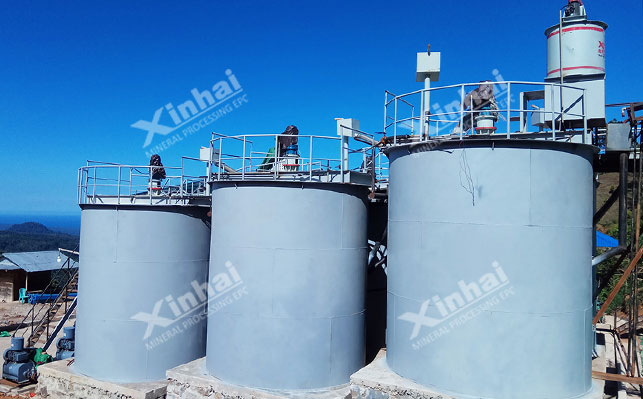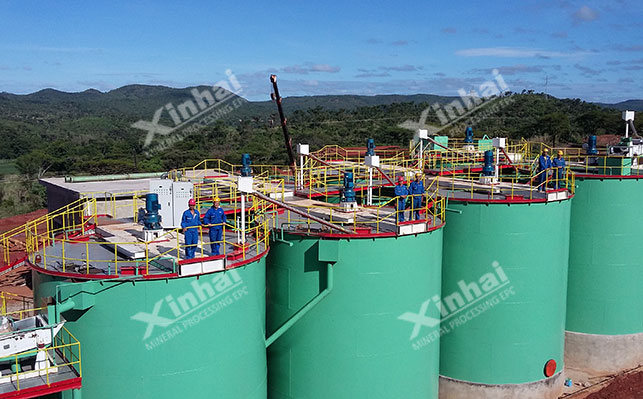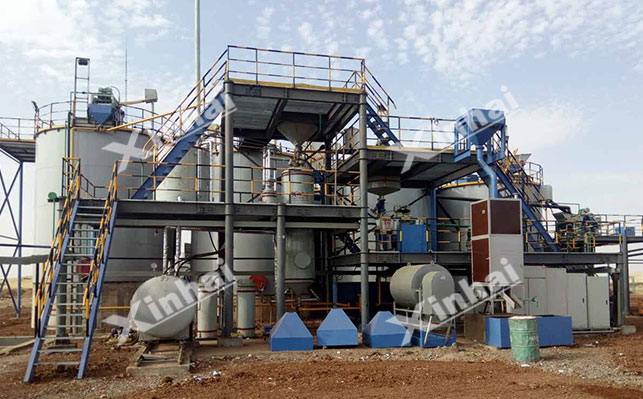
15311826613
Click to add WeChatCyanidation gold extraction is a relatively mature ore dressing method with high recovery rate, strong adaptability to ore, and the ability to produce gold on the spot. Cyanidation is still one of the main methods of gold production. Generally, gold cyanidation can be divided into two categories: stirring cyanidation and percolation cyanidation. The following article focuses on the stirring cyanidation gold extraction process.
The stirring cyanidation gold extraction process is mainly used to treat flotation gold concentrate or full mud cyanidation. It can include two types of gold extraction process flows, one is the so-called cyanidation-zinc replacement process (CCD method and CCF method) that recovers gold by continuous countercurrent washing and replacement precipitation with zinc powder (silk); the other is the non-filtration cyanidation carbon slurry process (CIP method and CIL method) that does not require filtration and washing, and uses activated carbon to directly adsorb and recover gold from cyanide slurry.

The cyanide-zinc exchange process (CCD method and CCF method) mainly includes the preparation of leaching raw materials, stirring cyanide leaching, countercurrent washing solid-liquid separation, leachate purification and deoxidation, zinc powder (wire) exchange and pickling, smelting and ingot making, etc.
The carbon-in-pulp gold extraction process (CIP method and CIL method) is to put activated carbon into the cyanide slurry, adsorb the dissolved gold on the activated carbon, and then extract gold from the activated carbon. It mainly includes the preparation of leaching raw materials, stirring leaching and countercurrent carbon adsorption, gold-loaded carbon desorption, electrolytic electrolysis, smelting and ingot making, carbon regeneration, etc.

Carbon-in-Pulp Gold Extraction(CIP): First cyanide leaching, then add activated carbon to adsorb gold in the ore slurry;
Carbon-In-Leach Gold Extraction(CIL): Add activated carbon to the leaching tank, leaching and adsorption are carried out simultaneously, that is, leaching and adsorption.
In the CIP process, leaching and adsorption are two independent operations. In the adsorption operation, the leaching process has been basically completed, and the size, number and operating conditions of the adsorption tanks are determined by the adsorption parameters. In the CIL process, leaching and adsorption operations are carried out simultaneously. Generally speaking, the leaching operation takes longer than the adsorption operation, so the size of the tank, aeration and dosing are determined by the leaching parameters. Since the adsorption rate is a function of the concentration of dissolved gold in the solution, in order to increase the concentration of dissolved gold in the front adsorption tank and increase the leaching time, 1 to 2 levels of pre-leaching are usually added before leaching and adsorption.

1. The CIP process is longer than the CIL process, but the amount of carbon stored in the CIL process is large and the carbon concentration is low. The amount of slurry transported for carbonization is several times that of CIP (generally 4 times);
2. The amount of accumulated metal in the CIP process is relatively large, and the distribution of the accumulated metal in the two processes is different. In the CIP process, the distribution of accumulated metal on the activated carbon and in the solution is basically the same, but in the CIL process, the metal is mainly accumulated on the activated carbon. The gold content of the solution in the process is also different.
3. The gold content in the CIL solution is higher than that in the CIP process, which is determined by the process structure. The CIL process is leaching and adsorption, and new dissolved gold is constantly entering the solution, so the gold in the solution is constantly replenished, and the gold content in the solution is relatively high. The CIP process is a single adsorption, and the replenishment of dissolved gold in the solution is very small, so the gold grade is lower.
The above is an introduction to the two commonly used methods of stirring cyanide gold extraction and the difference between the two methods. For gold ore concentrators, it is necessary to select a suitable process flow based on the actual properties of the gold ore, processing volume, project environment, etc. In addition to the above, gold mines also have gravity separation and flotation methods.